Today will review four methods to open Emoji Panel in Windows 11. All the methods are native and do not require third party apps. The great thing about the built-in feature is that it works in most software, and most modern apps can show them as well.
Advertisеment
An emoji is a visual symbol, such as a smiley face or pictogram, that is integrated into text. On Windows 11, the latest edition of emojis, Unicode Emoji 15, is supported, with an updated version, Emoji 15.1, coming soon in Windows 11 24H2. The latter adds new emoji like head shaking horizontally and vertically, phoenix, lime, brown mushroom, and broken chain. Emoji 15.1 also sees a change in Unicode's representation of family combinations, while Windows has opted to stick with their existing style using people for family combinations.
Microsoft supports updates for various emojis representing person/man/woman walking, kneeling, with cane, running, manual wheelchair, and motorized wheelchair, allowing users to choose between right facing and the original left facing orientation.
Windows 11 displays stunning 3D Fluent emojis that can be easily inserted into any document. To assist in selecting and finding emojis, Windows 11 features an Emoji Panel.
Open Emoji Panel with a Keyboard Shortcut
To open the Emoji panel in Windows 11 with a keyboard shortcut, do the following.
- While in your app, place the cursor in a text field or document area.
- Press the Win + . (period) or Win + ; (semicolon) simultaneously.
- Find the desired smiley from grid in the Emoji Panel.
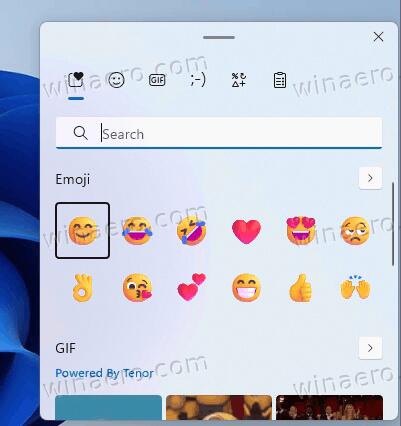
You can select any emoticon by clicking on it. Besides, the emoji panel supports extra hotkeys for your convenience.
- To move between the emoji, use the arrow keys.
- The Tab key switches the emoticon category.
- Enter - select the emoji.
- Esc - close the pane.
Besides the keyboard driven operations, you can use a context menu.
Launch Emoji Panel from Context Menu
To open the Emoji pane from the context menu in Windows 11, follow the steps below.
- Right-click a text box or document such as the address bar of the browser.
- Select Emoji from the menu.
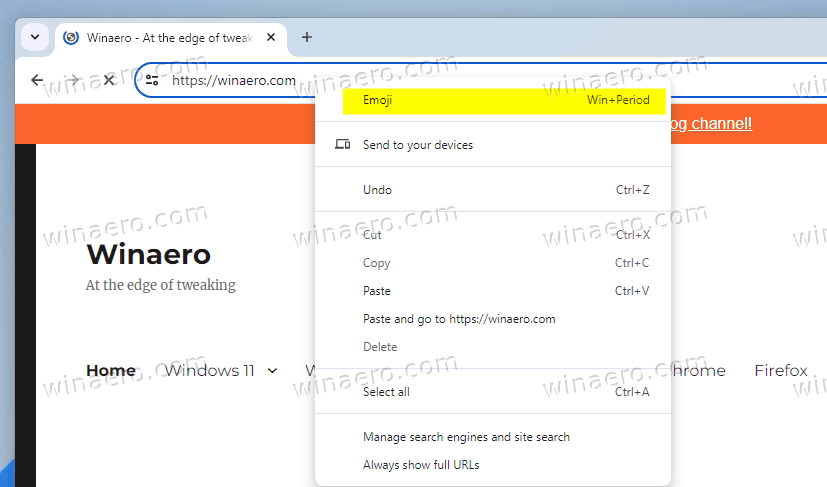
- Now you can pick an emoticon, so it will appear in the active text area.
ℹ️ Note: Some of the legacy apps, and some modern apps with non-default text box controls and customized context menus may lack the Emoji entry in the menu.
Another way to quickly access the Emoji list is to the Clipboard History feature. Besides the items that you have copied earlier,
Open Emoji Panel from Clipboard History in Windows 11
- Press Win + V on your keyboard.
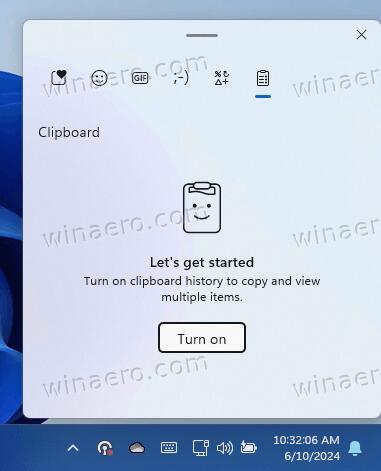
- In the clipboard flyout, click on the emoji icon.
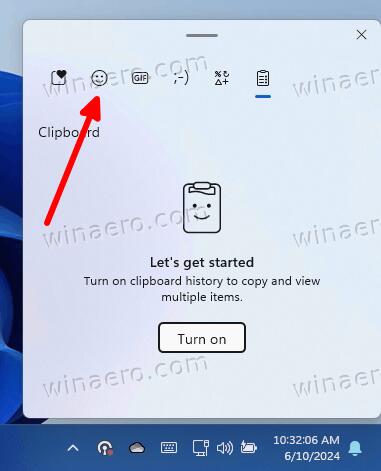
- You can now select the desired emoji to put it into the clipboard.
- Switch to your app, e.g. some messenger or browser, and press Ctrl + V to paste the selected emoticon.
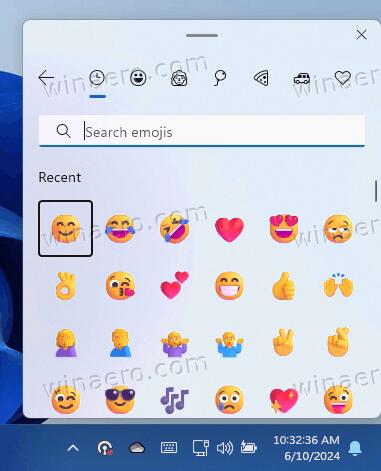
Finally, the last method is for devices that have a touch screen. There, Windows 11 shows an on-screen keyboard automatically (if enabled) or on demand with a special taskbar button.
Launch Emoji Panel from Touch Keyboard
To open the Emoji Panel from Touch Keyboard, do the following.
- Tap anywhere in a text box on the screen to open the touch keyboard. Alternatively, you can tap the keyboard button in the taskbar.
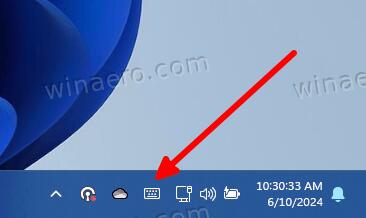
- Tap on the Emoji icon at the left side.
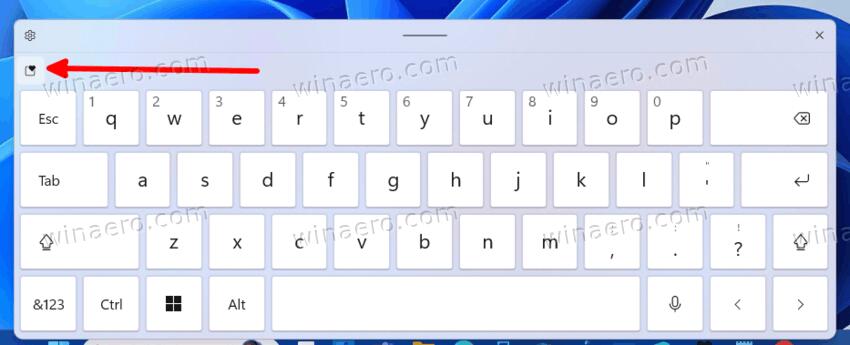
- Finally, you can now pick an emoji from the integrated pane. It also supports animated GIFs and other fancy options.
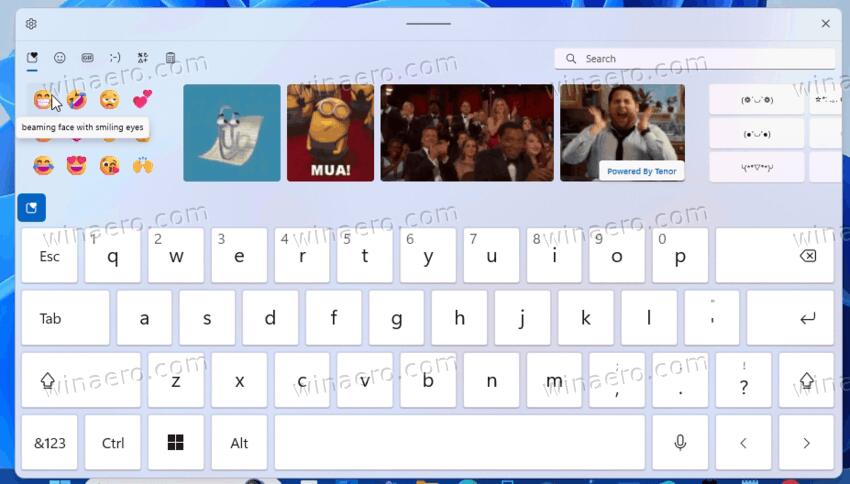
That's it.
Support us
Winaero greatly relies on your support. You can help the site keep bringing you interesting and useful content and software by using these options:
